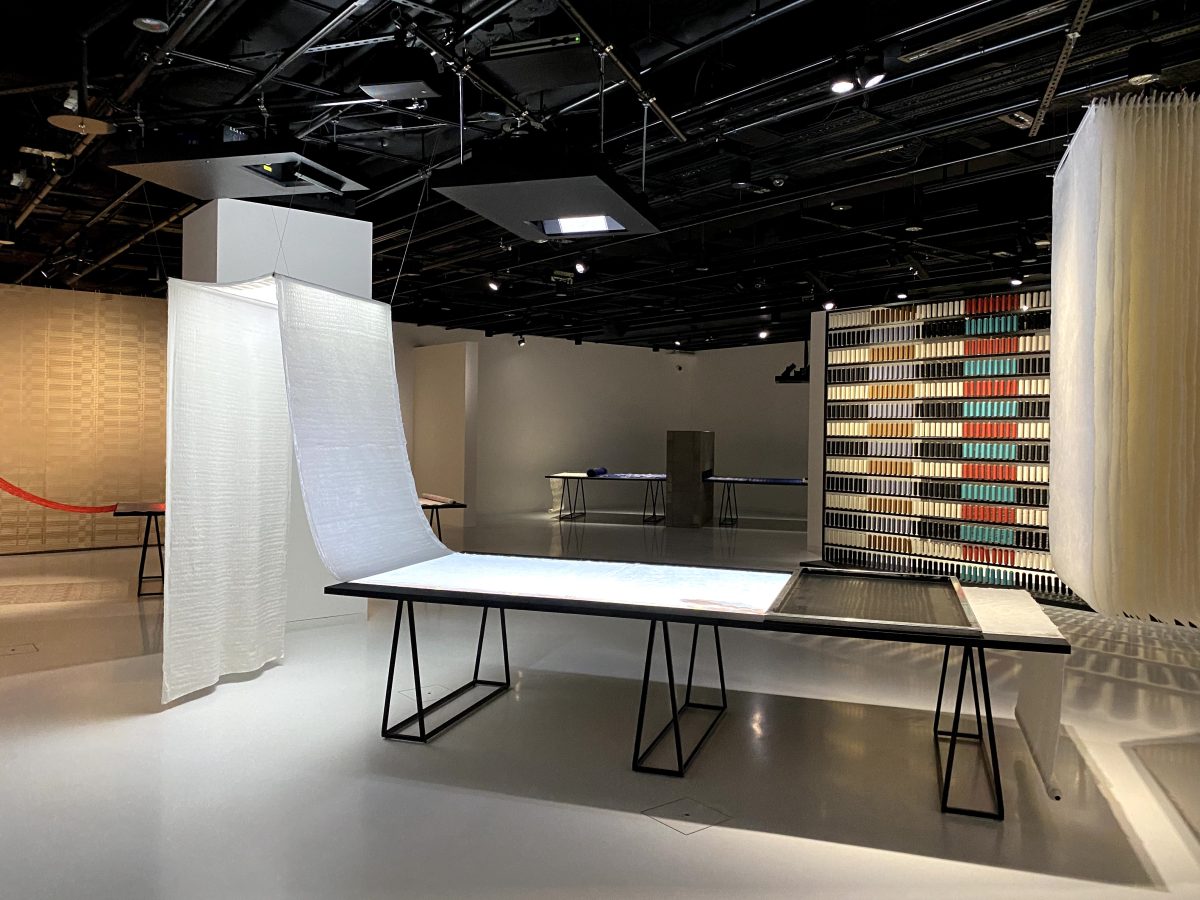
Growing up in a small country town in Ibaraki Prefecture, Japan, Sudō Reiko always looked forward to the arrival of spring and fall, which brought the traveling kimono salesman with his bundle of colorful fabrics to her family’s home. “Hiding behind my mother, aunt, and grandfather, I would watch spellbound as he presented these beautiful textiles, one after the other, on the tatami mats,” Sudō later wrote. This early, intimate encounter with the magic of fabric planted a seed, leading her to a celebrated career as a textile designer. But Sudō doesn’t just want to make textiles beautiful, she wants to make them sustainable, too.
Making Nuno: Visionary Japanese Textiles by Sudō Reiko at Dovecot Studios in Edinburgh, Scotland surveys over 30 years of Sudō’s career as the design director and co-founder of Nuno, an international textile design firm based in Tokyo. The show explores the unconventional materials, local collaborations, and cutting-edge technologies that Sudō has pioneered in the pursuit of sustainability, quality, and innovation, Nuno’s core values under her leadership.
Sudō’s textiles are visually striking. Since she was a student, the designer has been inspired by visual artists like Magdalena Abakanowicz, whose giant, freestanding sculpted weavings showed Sudō “that textiles could be used as a medium of artistic expression,” she told Hyperallergic in a recent email. Today, Sudō’s work appears in major collections around the world, including the Museum of Modern Art in New York and the Victoria & Albert Museum in London. But beyond their rich colors and textures, Sudō’s textiles are also meant to last.

“Since Nuno’s founding in 1984, we’ve never held bargain sales,” Sudō said by email. “Our guiding principle is to make things that don’t get old and thrown away.” To do this, Nuno has partnered with specialized Japanese textile artisans and technicians who contribute their expertise in a collaborative process that, in Sudō’s words, “help[s] improve the design outcome.” Early on, the company also developed durable chemical dyes that withstand damage from light and abrasion, reducing the amount of dye needed in manufacturing and making Nuno’s products more durable over time. Sudō’s focus on domestic production ensures a high level of quality and helps to keep Japanese traditional workshops and craft methods alive. But it also crucially reduces the company’s environmental footprint.
“The fiber industry is said to be second only to energy industries in the amount of waste produced,” Sudō noted. “And like energy, textiles are very close to our daily life.” Nuno actively avoids excess waste by reworking fabric remnants into tsugihagi patchwork textiles and oriori accessory items, and uses techniques like resewing, re-tailoring, mending, and re-dying to repurpose and recycle their products. Over her career, Sudō has also stretched ideas about what can constitute a fabric. Her more than 3,000 textile designs have encompassed local, natural materials like silk and handmade Japanese washi paper, but they’ve also incorporated unlikely stuff like nylon tape and thermoplastic.

Sudō has even made use of industry by-products like kuwako and koishimaru silkworm cocoons through her kibiso crisscross technique, which makes even this hard, thick material workable for production. She finds another unlikely use for nature in her workshops, which utilize a special bacteria to purify their wastewater for reuse on-site. In the future, Sudō’s eco-oriented vision looks beyond water-soluble fibers to fibers that themselves are made out of water. She predicts that these “could be used to make clothes and architectural spaces, then dissolved back to water when no longer needed.”
The designer’s commitment to sustainability is at the core of her professional practice, but it’s also a deeply ingrained cultural value. “The Japanese expression mottai nai, which essentially means ‘too good to waste,’ derives from that Buddhist thinking that everything has a life that should be respected,” she explained. For Sudō, things should keep circulating rather than being discarded, and this thinking applies as much to commercial manufacturing as to our own daily lives. “I don’t see it as limited to any scale,” she said. “Circular practices can be realized in daily life on all different levels in how we live.”


0 Commentaires